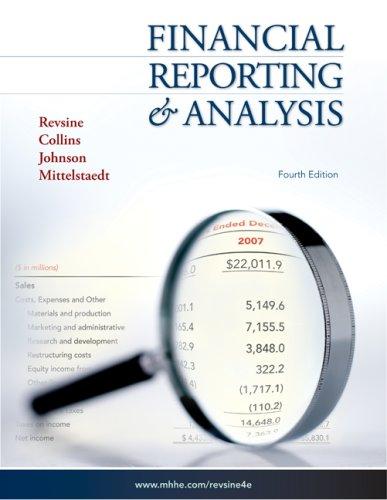Question
On January 1, 2017, Sage Industries had stock outstanding as follows. 6% Cumulative preferred stock, $100par value,issued and outstanding9,700shares$970,000Common stock, $10par value, issued and outstanding218,000shares2,180,000
On January 1, 2017, Sage Industries had stock outstanding as follows.
6% Cumulative preferred stock, $100par value,issued and outstanding9,700shares$970,000Common stock, $10par value, issued and outstanding218,000shares2,180,000
To acquire the net assets of three smaller companies, Sage authorized the issuance of an additional160,800common shares. The acquisitions took place as shown below.
Date of Acquisition
Shares Issued
Company A April 1, 201750,400Company B July 1, 201781,600Company C October 1, 201728,800
On May 14, 2017, Sage realized a $91,200(before taxes) insurance gain on discontinued operations.
On December 31, 2017, Sage recorded income of $273,600from continuing operations (after tax).
Assuming a50% tax rate, compute the earnings per share data that should appear on the financial statements of Sage Industries as of December 31, 2017.(Round answer to 2 decimal places, e.g. $2.55.)
SageIndustries
Income Statement
December 31, 2017
For the Year Ended December 31, 2017
For the Quarter Ended December 31, 2017
Discontinued Operations Gain, Net of Tax
Dividends
Expenses
Extraordinary Loss
Extraordinary Gain
Income Before Extraordinary Item
Income From Continuing Operations
Income Per Share Before Extraordinary Item
Loss From Discontinued Operations
Net Income / (Loss)
Retained Earnings, January 1
Retained Earnings, December 31
Revenues
Total Expenses
Total Revenues
$
Discontinued Operations Gain, Net of Tax
Dividends
Expenses
Extraordinary Loss
Extraordinary Gain
Income Before Extraordinary Item
Income From Continuing Operations
Income Per Share Before Extraordinary Item
Loss From Discontinued Operations
Net Income / (Loss)
Retained Earnings, January 1
Retained Earnings, December 31
Revenues
Total Expenses
Total Revenues
Discontinued Operations Gain, Net of Tax
Dividends
Expenses
Extraordinary Loss
Extraordinary Gain
Income Before Extraordinary Item
Income From Continuing Operations
Income Per Share Before Extraordinary Item
Loss From Discontinued Operations
Net Income / (Loss)
Retained Earnings, January 1
Retained Earnings, December 31
Revenues
Total Expenses
Total Revenues
$
Step by Step Solution
There are 3 Steps involved in it
Step: 1

Get Instant Access to Expert-Tailored Solutions
See step-by-step solutions with expert insights and AI powered tools for academic success
Step: 2

Step: 3

Ace Your Homework with AI
Get the answers you need in no time with our AI-driven, step-by-step assistance
Get Started


